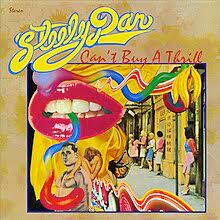Howdy, Stranger!
It looks like you're new here. If you want to get involved, click one of these buttons!
Categories
- 241.8K All Categories
- 22 >> Start Here <<
- 12 New Members
- 8 FAQs
- 86.7K Gear
- 39.5K Guitar
- 3.4K Acoustics
- 1.3K Bass
- 14.6K Amps
- 17.2K FX
- 271 Digital & Modelling
- 765 Other Instruments
- 8.3K Making & Modding
- 421 Gear Reviews
- 107 Guitar Reviews
- 73 Amp Reviews
- 119 FX Reviews
- 87 Other Reviews
- 749 Made in the UK
- 975 Theory
- 1.9K Technique
- 2.1K Live
- 3.2K Studio & Recording
- 2.1K Making Music
- 219 Events
- 15 Guitar Show 2018
- 830 Plug My Stuff
- 105.2K Classifieds
- 41.1K Guitars £
- 2.8K Acoustics £
- 139 LH Guitars £
- 899 Basses £
- 10.6K Parts £
- 18.3K Amps £
- 34.1K FX £
- 2.8K Studio & Rec £
- 6.1K Misc £
- 465 Personnel
- 54.8K Chat
- 36.6K Off Topic
- 1.1K Tributes
- 6.6K Music
In this Discussion
Become a Subscriber!
Subscribe to our Patreon, and get image uploads with no ads on the site!
Fret Rockers
 Bellycaster
Frets: 5861
Bellycaster
Frets: 5861
in Bass
Do Luthiers use the same size Fret Rocker for Bass and Guitar. As fret spacings are different I ought to ask.
I'd like to check the frets on my Jazz Bass.
Also, would a numpty like me be capable of lowering the fret height should there be a high one or two. Don't know what tools used for frets: File, Stone?
Thanks.
I'd like to check the frets on my Jazz Bass.
Also, would a numpty like me be capable of lowering the fret height should there be a high one or two. Don't know what tools used for frets: File, Stone?
Thanks.
Only a Fool Would Say That.
0 LOL 0
LOL 0 Wow! 0
Wow! 0 Wisdom
Wisdom
 LOL 0
LOL 0 Wow! 0
Wow! 0 Wisdom
Wisdom Base theme by DesignModo & ported to Powered by Vanilla by Chris Ireland, modified by the "theFB" team.


Comments
I put some 40-95's on the Jazz Bass tonight, which I was gonna do anyway and I've adjusted neck relief and string height. I'm quite pleased with the results as there is now only a slight buzz on the D string at 19th fret. Amplified it doesn't really show much. Not that I'd play up there much anyway.
I also inspected the frets to see if any had lifted a little and it appears not. I'd assume that would be easy to spot if so.
I might buy a fret rocker anyway to start with just to do my own checks. Will any do? Is there owt to avoid as I've seen prices vary from very cheap upwards.
Just another question: When checking with a Fret Rocker, would I need to remove the neck of the Guitar or Bass in question.
I've gotten the Jazz Bass almost perfect now. The action is good and I'm as good as rid of the buzz up the dusty end.